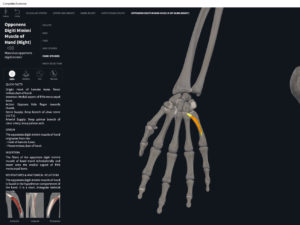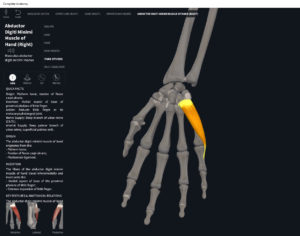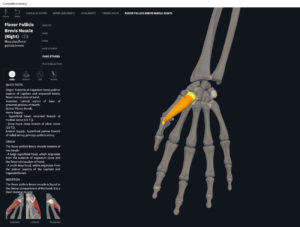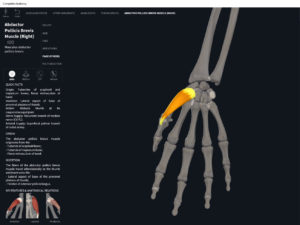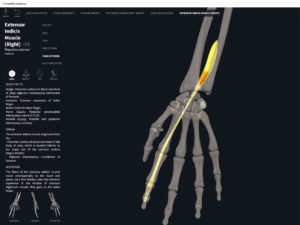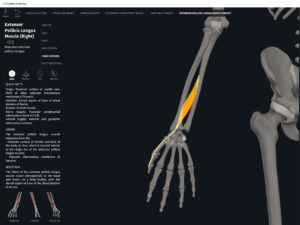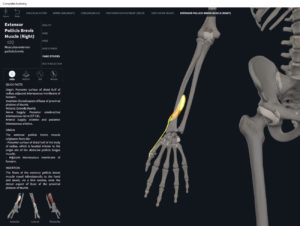Anatomy & Physiology: Muscles—Adductor Pollicis.
Structure.
- Origin: oblique head—capitate and metacarpals II and III; transverse head—metacarpal III.
- Insertion: medial side of proximal phalanx of thumb by a tendon containing a sesamoid bone.
Function.
- Concentric action: adducts thumb at carpometacarpal and metacarpophalangeal joints. Lesser: flexion and extension of thumb at MCP and IP joints respectively.
- Reverse mover action: adducts, flexes trapezium at CMC; flex and extend metacarpal of thumb at MCP and IP respectively.
- Eccentric action: controls/restrains/slows thumb abduction at CMC, extension of thumb at CMC and MCP; flexion at IP of thumb.
- Isometric action: stabilizes CMC, MCP, and IP of thumb.
- Innervation: ulnar nerves.
- Arterial supply: branches of radial artery.
Clinical Significance.
More.
- https://www.anatomynext.com/adductor-pollicis/
- https://www.youtube.com/watch?v=A7FFIz99laY
- https://www.youtube.com/watch?v=4hjIcK4CQmI
- https://www.youtube.com/watch?v=q71qwvqDBCY
References
Biel, A. (2015). Trail guide to the body: A hands-on guide to locating muscles, bones and more.
Cedars-Sinai. (2018). Vertebrae of the spine. Retrieved from https://www.cedars-sinai.org/health-library/diseases-and-conditions/v/vertebrae-of-the-spine.html
Clark, M., Lucett, S., Sutton, B. G., & National Academy of Sports Medicine. (2014). NASM essentials of corrective exercise training. Burlington, MA: Jones & Bartlett Learning.
Jenkins, G., & Tortora, G. J. (2012). Anatomy and Physiology: From Science to Life, 3rd Edition International Stu. John Wiley & Sons.
Muscolino, J. E. (2017). The muscular system manual: The skeletal muscles of the human body.

